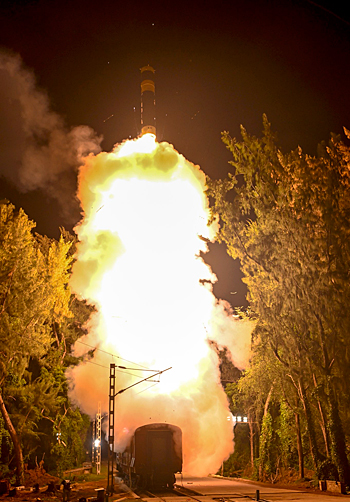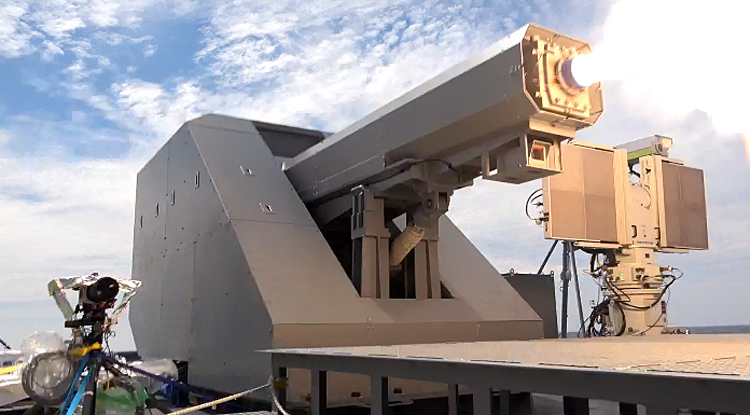INDIAN ARMED FORCES CHIEFS ON OUR RELENTLESS AND FOCUSED PUBLISHING EFFORTS

The insightful articles, inspiring narrations and analytical perspectives presented by the Editorial Team, establish an alluring connect with the reader. My compliments and best wishes to SP Guide Publications.

"Over the past 60 years, the growth of SP Guide Publications has mirrored the rising stature of Indian Navy. Its well-researched and informative magazines on Defence and Aerospace sector have served to shape an educated opinion of our military personnel, policy makers and the public alike. I wish SP's Publication team continued success, fair winds and following seas in all future endeavour!"

Since, its inception in 1964, SP Guide Publications has consistently demonstrated commitment to high-quality journalism in the aerospace and defence sectors, earning a well-deserved reputation as Asia's largest media house in this domain. I wish SP Guide Publications continued success in its pursuit of excellence.
- Appointments Committee of Cabinet approves one-month extension in service of Chief of the Army Staff
- Prime Minister witnesses 'Bharat Shakti' – a Tri-Services Firing and Manoeuvre Exercise in Pokhran, Rajasthan
- Interim Defence Budget 2024-25 — An Analysis
- Union Defence budget 2024
- Indian Army: In quest of greater firepower and policy recommendations for gaps
- Indian Army Annual Press Conference 2024
- Tata Boeing Aerospace Delivers 250 AH-64 Apache Fuselages, Manufactured in India
Rail Launched Agni Prime
Rail-mobile ICBMs have the advantage that ICBMs using this system are harder to destroy than fixed positions, as they can travel anywhere along a nation's rail network, and hide from satellite surveillance in tunnels.
 |
The Author is Former Director General of Information Systems and A Special Forces Veteran, Indian Army |

In a historic first, India launched the Agni-Prime ballistic missile from a rail-based mobile platform during a full operational trial on September 24, 2025. This was no routine launch. Coupling canisterisation with rail mobility compressed adversary timelines, blurred targeting, and validated the second-strike posture that transforms the No First Use (NFU) doctrine from just a declaration into a credible deterrent. The Ministry of Defence (MoD) posted on September 25, that the Defence Research and Development Organisation (DRDO), in collaboration with the Strategic Forces Command (SFC), had successfully flight-tested an Agni-Prime missile from a rail-based mobile launcher. The MoD called it a "first-of-its-kind launch that enables cross-country mobility, rapid reaction capability, and low-visibility deployment."
Agni-Prime is a two-stage, solid-propellant, intermediate-range ballistic missile with a design range of roughly up to 2,000 km. In the test launch, the missile was canisterised and fired from a specially modified rail wagon under an operational scenario; not launched from a static test pad with every variable controlled, but from a platform designed to move in and out of the national rail network. In a canisterised system, the missile is stored and transported inside a sealed tube that both protects the weapon and allows it to be launched with minimal on-site preparation; material reduction in response time – launching the missile in minutes.
Coupling canisterisation with rail mobility compressed adversary timelines, blurred targeting, and validated the second-strike posture that transforms the No First Use (NFU) doctrine from just a declaration into a credible deterrent.
For nuclear forces, this is survivability in action since an attacker employing First Strike. If an adversary believes it needs only hours to destroy an opponent's land-based missiles on the ground, it has an incentive to attempt a disarming first strike, called a counter-force attack. If a launcher can be dispersed, hidden, moved, and launched quickly, that incentive disappears. An attacker cannot reliably suppress all launch options before they are used. Rail mobility amplifies that advantage since a missile mounted on a rail wagon is mobile across a dense national rail network and can be operated without special infrastructure or visible preparation. Cross-country mobility means launchers can be dispersed geographically, cycle through movement patterns, or be staged in locations that are operationally advantageous or simply harder to detect. Canisterisation reduces the first-strike window. It compresses the timeline in which an adversary must detect, track, and decide to strike, and it does so in a way that favours the defender.
The MoD called it a "first-of-its-kind launch that enables cross-country mobility, rapid reaction capability, and low-visibility deployment."
Strategically, this addition to India's Nuclear Triad changes the calculus for India's neighbours. For a potential adversary that once might have considered a window of opportunity to blunt India's land-based forces, more mobility and faster response shrink that window, increase uncertainty, and raise the costs of any attempt to disarm. It strengthens the credibility of India's promise to retaliate, and thereby supports NFU by making retaliation credible and survivable rather than theoretical.

Concurrently, on September 24, 2025, Japan said its ship-mounted electromagnetic railgun has successfully hit a target vessel during a recent test, a key step toward future deployment of the next-generation weapon capable of shooting projectiles at an extremely high speed.The Acquisition, Technology and Logistics Agency had said earlier that a railgun installed on the Maritime Self-Defence Force (MSDF) test ship 'Asuka' succeeded in long-range shooting at a target ship. An official from the Japanese Defence Ministry's procurement arm said the live-fire tests were conducted from early June to early July in the Pacific Ocean off Chiba Prefecture, east of Tokyo, and in waters near Hachijo Island, about 300-km south of the capital.
Strategically, this addition to India's Nuclear Triad changes the calculus for India's neighbours.
In October 2023, the agency announced that it had carried out "the world's first-ever maritime firing test of a railgun" and said it would aim to put the cutting-edge weapons to early practical use to defend Japanese vessels "from threats in the air and at sea. "According to the agency, a prototype railgun recorded a projectile launch speed of about 2.3 km per second – nearly Mach 7. As railguns use electricity instead of explosive force, their projectiles are considered more durable and safer to store.
Many countries have been developing the capability of rail-launched Inter Continental Ballistic Missiles (ICBMs) since ICBMs are large and not easily mobile. The first operational example, and the best-known, is the Soviet RT-23 Molodets. The US planned and started development of an analogue, the Peacekeeper Rail Garrison, but abandoned the plan When the Cold war ended. China successfully tested a railroad-based ICBM system in December 2016, which is equipped with the DF-41 missile. Beijing is reportedly further developing these systems. In September 2021, North Korea tested a new rail-based short-range ballistic missile (SRBM) system, and released photos of it firing a missile. A North Korean official said, "The test of the railway-launched SRBM could create the basis of a future railway-launched ICBM."
It strengthens the credibility of India's promise to retaliate, and thereby supports NFU by making retaliation credible and survivable rather than theoretical.
Rail-mobile ICBMs have the advantage that ICBMs using this system are harder to destroy than fixed positions, as they can travel anywhere along a nation's rail network, and hide from satellite surveillance in tunnels. Also, during times of heightened international tensions, railroad-based ICBMs can be rapidly mobilised and spread out across a country's railroad network as an insurance policy. At the same time rail mobile ICBMs also have certain drawbacks; their movement is limited to where railroad tracks exist; railroad tracks are also vulnerable to sabotage, which would be a major concern during times of war; it is also difficult to maintain security along vast railroad networks, even during peacetime.





